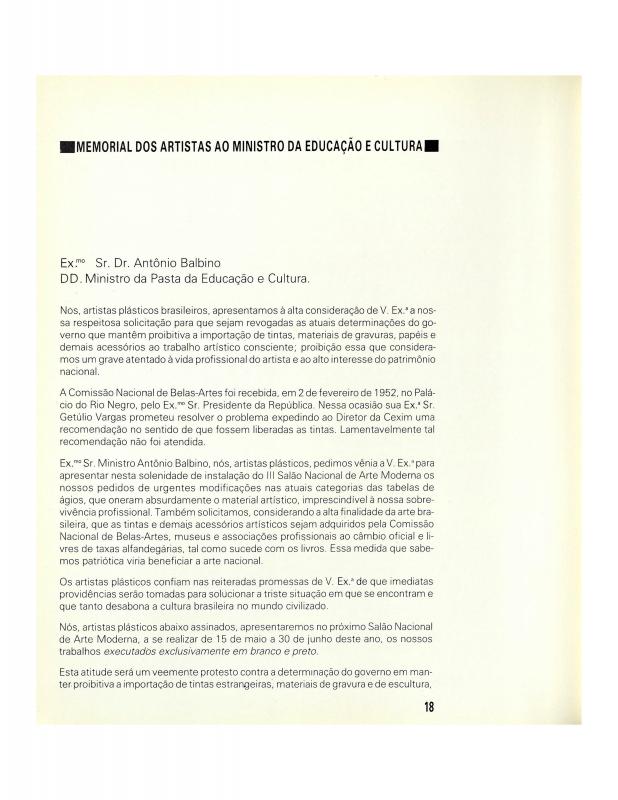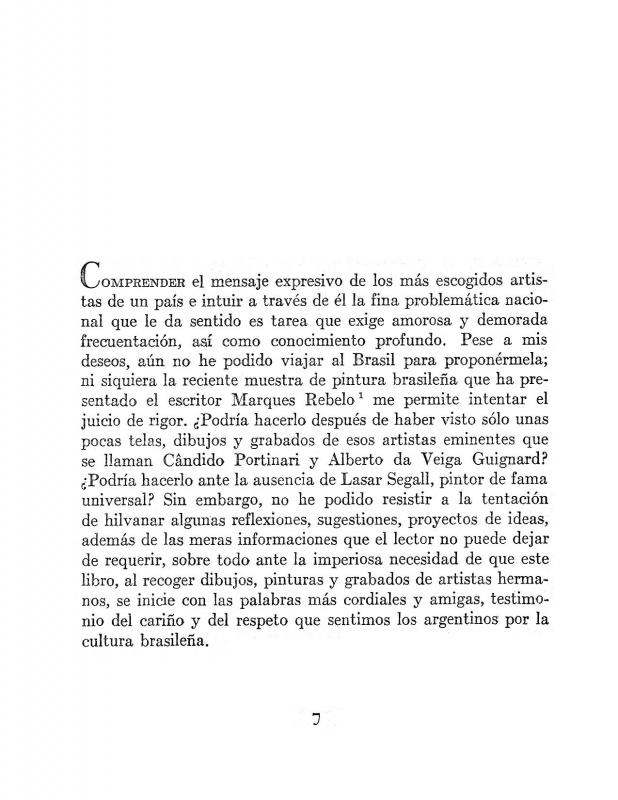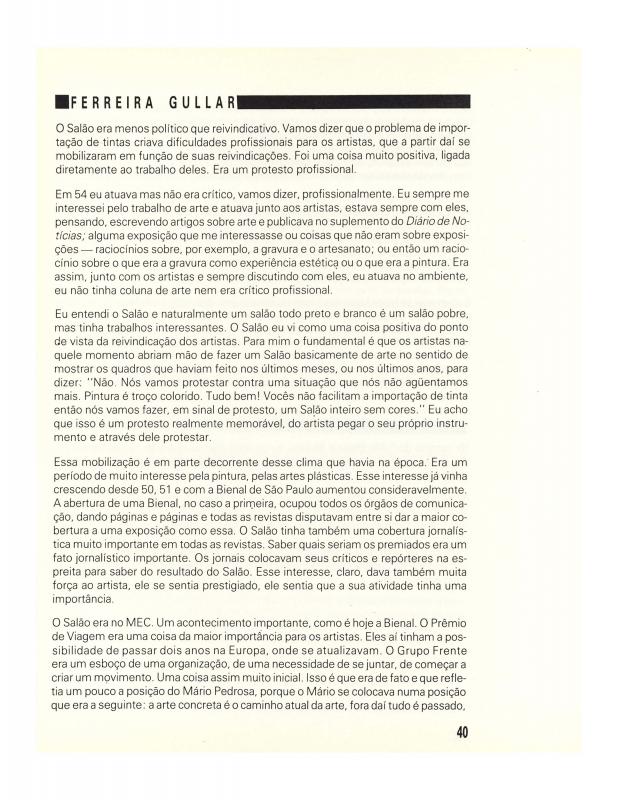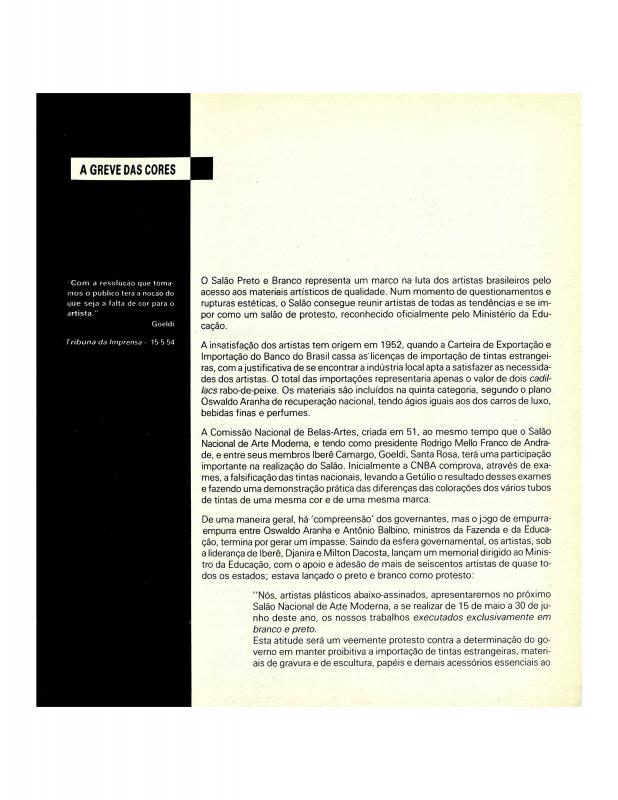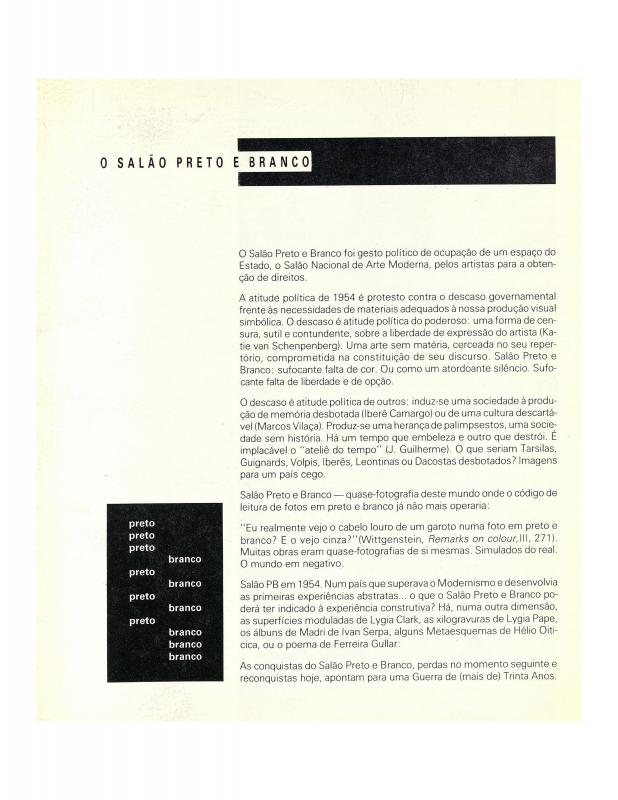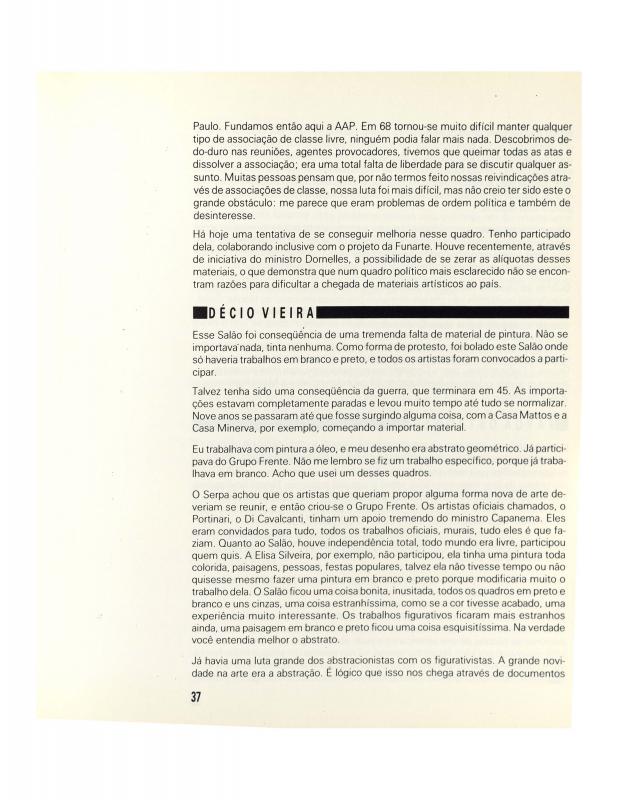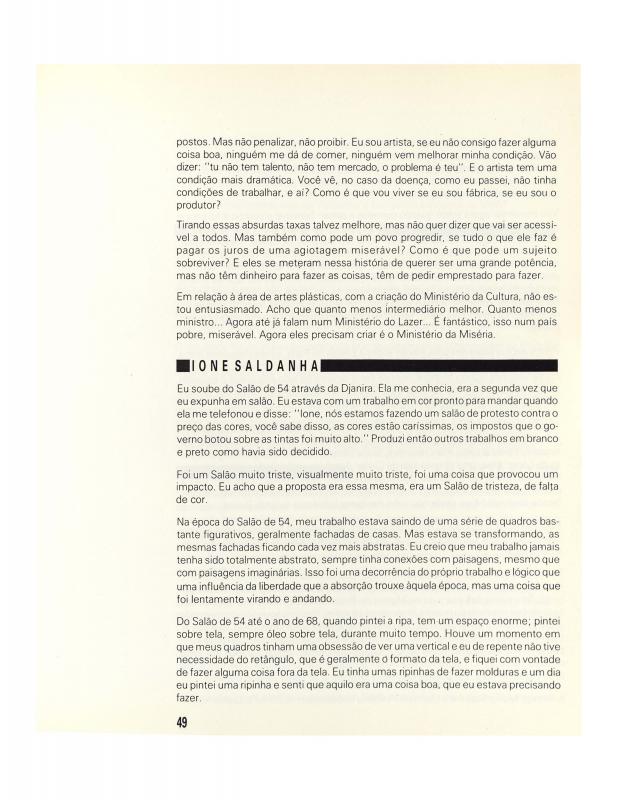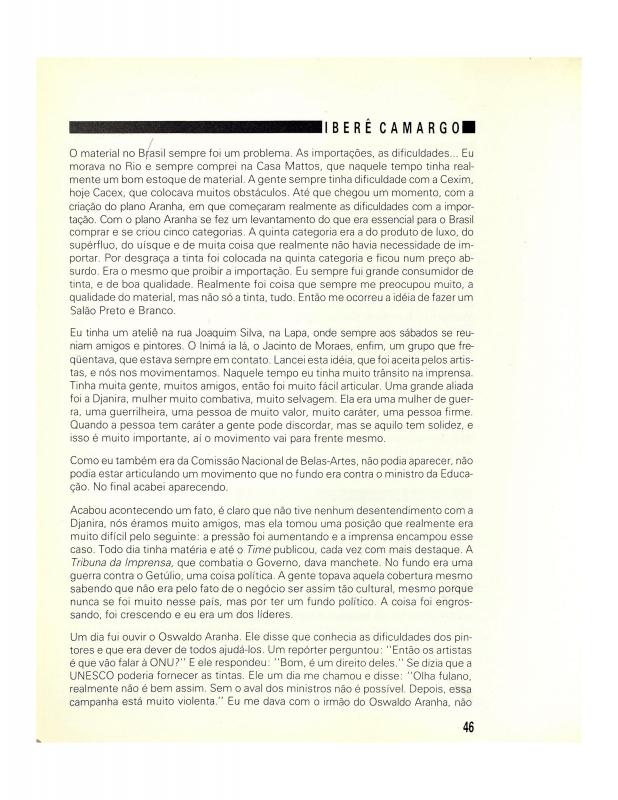The Salão Nacional de Arte Moderna was presented for the first time in 1952 in the wake of the División Moderna (Modern Division) at the Salão Nacional de Belas Artes. The third edition, which came to be known as the Salão Preto e Branco (Black-and-White Salon), opened on May 15, 1954. Participating artists protested against the poor quality of available art materials (mainly substitutes for imported products) due to import restrictions imposed by the Brazilian government. Led by Iberê Camargo, Milton Dacosta, and Djanira, six hundred artists from all over the country signed a manifesto addressed to the Ministério da Educação e Saúde (MES), the Ministry of Education and Health in the Getúlio Vargas administration, objecting to any restrictions on the import of paint, items used for printmaking and sculpture, paper, and other basic materials [see, in the ICAA digital archive: (doc. no. 1307648">1307648)]. After the radio announcer, Pascoal Longo, the host of the MEC Clube da Crítica program, suspended the station’s regular programming as a gesture of solidarity with the artists, the Ministry of Education sent him a public message promising to make changes in the government’s policies. He was instructed to go back on the air (doc. no. 1307663">1307663) to announce the “removal of obstacles” through “government subsidies that would exempt artists from paying tax on imported materials.” In this interview, Djanira thanks Longo for his “tribute to Brazilian artists” that led to “a great victory” and united artists and the radio community. She stressed that “the solidarity expressed by the Clube da Crítica would never be forgotten by Brazilian artists.”
Born in Avaré (in the State of São Paulo), the painter, designer, and printmaker Djanira [da Motta e Silva] (1914−1979) started drawing while she was being treated for tuberculosis. She moved to Rio de Janeiro in 1939 and opened a rooming house in the Santa Teresa area where several artists lived, including Emeric Mercier, Carlos Scliar, Milton Dacosta, Árpád Szenes, and Maria Helena Vieira da Silva. Djanira had her first exhibition at the Salão Nacional de Belas Artes (what had once been the Salão Nacional de Arte Moderna) in 1942, after which she had exhibitions in Argentina, Uruguay, Chile, and at the Royal Academy in London. While living in New York, from 1944 to 1947, she met Fernand Léger, Joan Miró, and Marc Chagall, and exhibited her work in Washington, DC, and Boston. In 1953 and 1954 she studied in the Soviet Union. In 1977 the Museu Nacional de Belas Artes, Rio de Janeiro, held a retrospective exhibition that included 813 of her works: her flattened geometric paintings of Brazilian trades and traditions featuring ordinary workers, street celebrations, landscapes, friends, and relatives. The serenity of her work and her religious subject matter are in keeping with her decision to become a Carmelite nun in 1972.
[For more information about Djanira, see “Problemas da pintura brasileira,” by Mário Pedrosa (doc. no. 1075171); and “Comprender el mensaje expresivo,” by Jorge Romero Brest (doc. no. 808053)].
[For complementary reading on the subject of the Salão Preto e Branco (Black-and-White Salon), see: “Memorial dos artistas ao Ministro da Educação e Cultura” (doc. no 1307648">1307648); “Mensagem do Ministro da Educação e Cultura ao artistas” (doc. no. 1307663">1307663); “Depoimentos: Aluisio Carvão” (doc. no. 1307694) and “Depoimentos: Ferreira Gullar” (doc. no. 1307732) by Glória Ferreira and Luiza Interlenghi; “A greve das cores” (doc. no. 1307631) by Glória Ferreira; “O Salão Preto e Branco” (doc. no. 1307599) by Paulo Herkenhoff; the five following testimonials conducted by Luiza Interlenghi: “Depoimentos: Décio Vieira” (doc. no. 1307712); “Depoimentos: Ione Saldanha” (doc. no. 1307774); “Depoimentos: José Silveira D'Ávila” (doc. no. 1307791); “Depoimentos: Sérgio Camargo” (doc. no. 1307831); “Depoimentos: Ubi Bava” (doc. no. 1307851); and “Depoimentos: Iberê Camargo” (doc. no. 1307754) by Evelyn Yoschpe.]

